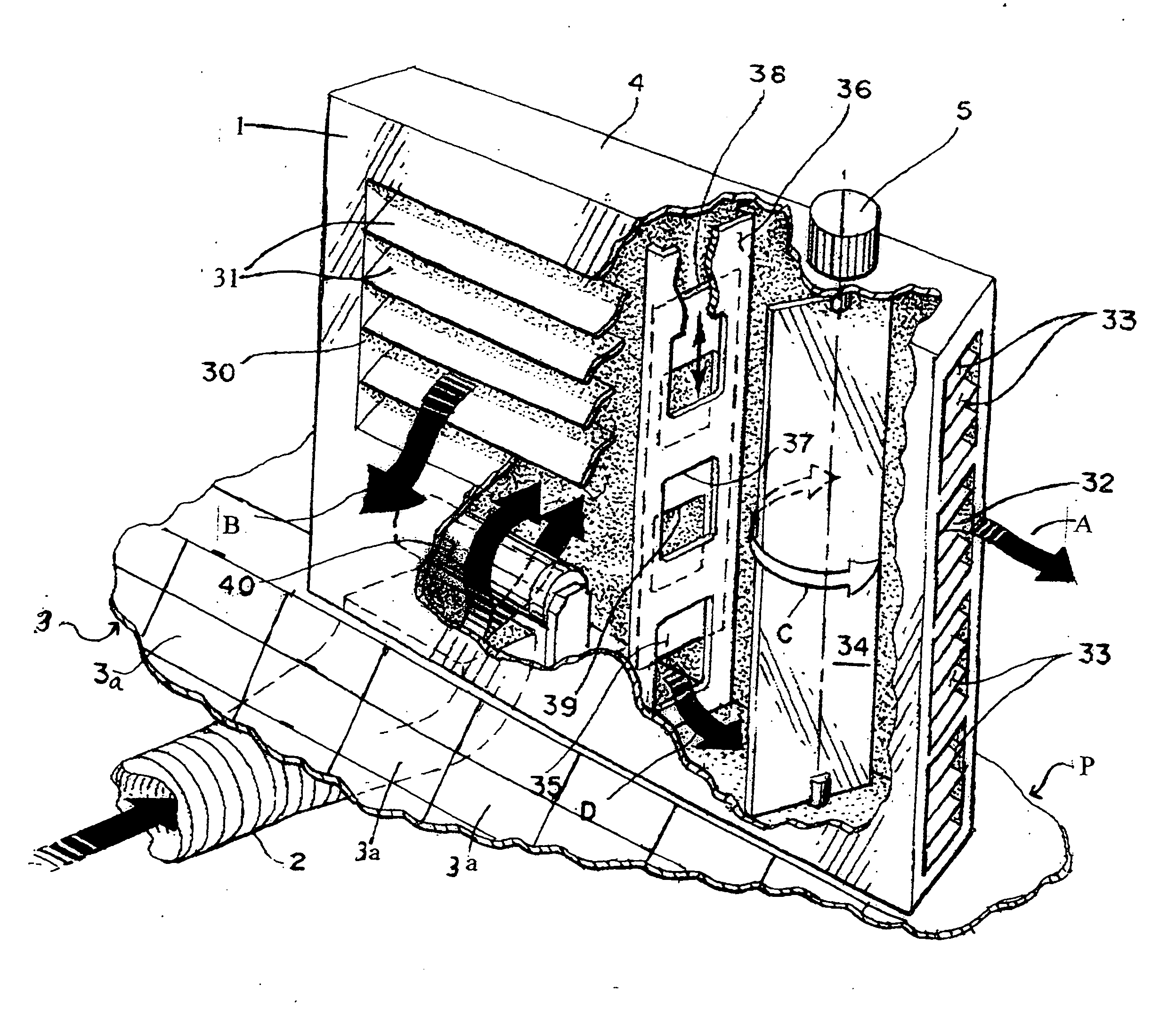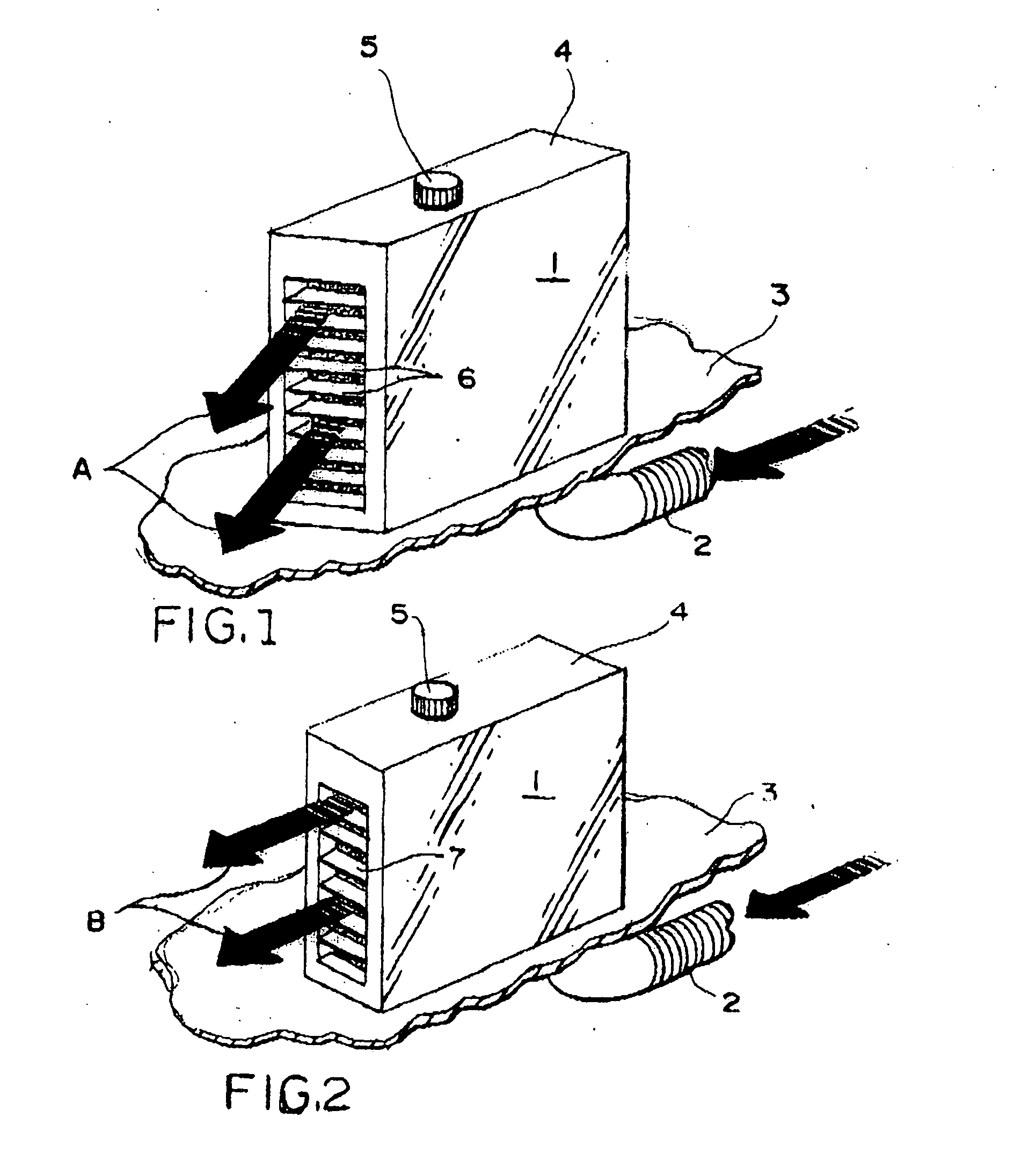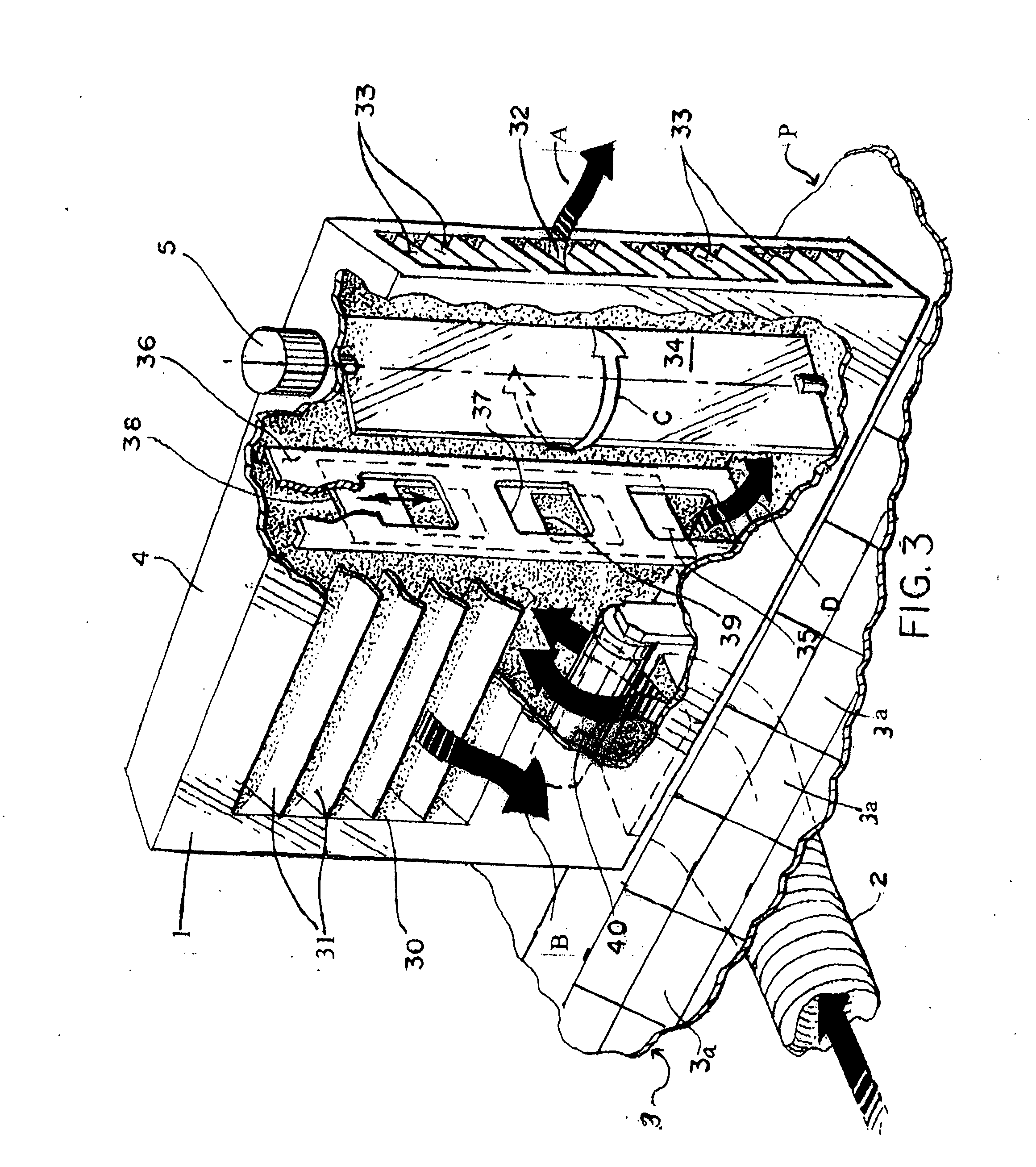Personalized distribution terminal
a technology of distribution terminal and personalization, applied in lighting and heating apparatus, ventilation systems, heating types, etc., can solve the problems of loss of productivity and wasted energy, loss of individual environment, and high cost of duct work installation of conventional air conditioning systems, and achieve the effect of saving energy and fine tuning control
- Summary
- Abstract
- Description
- Claims
- Application Information
AI Technical Summary
Benefits of technology
Problems solved by technology
Method used
Image
Examples
Embodiment Construction
[0047]FIG. 1 is a perspective view of an installation of a stand-alone unit 1 having a displacement ventilation system incorporated therein. The unit is independent from but located in the vicinity of an individual workstation. The unit 1 consists of a hollow chamber which is situated on a floor 3 having a plenum of conditioned air there below. The conditioned air is fed into the hollow chamber by a flexible duct 2 deriving air from below the floor 3. The air derived from below the floor may be supplied by way of a fan located below the floor 3, by pressurized conditioned air in the plenum or by a fan located in the unit itself, which will be shown below. The unit 1 has a top 4 having a control knob 5 thereon that controls the amount of air passing through the unit 1, as will be explained below. The unit 1, shown in FIG. 1, has a front air outlet that is angled to the right, relative to the unit 1, so that the air emanating from the unit 1 will be directed to the right, possibly to ...
PUM
 Login to View More
Login to View More Abstract
Description
Claims
Application Information
 Login to View More
Login to View More - R&D
- Intellectual Property
- Life Sciences
- Materials
- Tech Scout
- Unparalleled Data Quality
- Higher Quality Content
- 60% Fewer Hallucinations
Browse by: Latest US Patents, China's latest patents, Technical Efficacy Thesaurus, Application Domain, Technology Topic, Popular Technical Reports.
© 2025 PatSnap. All rights reserved.Legal|Privacy policy|Modern Slavery Act Transparency Statement|Sitemap|About US| Contact US: help@patsnap.com



